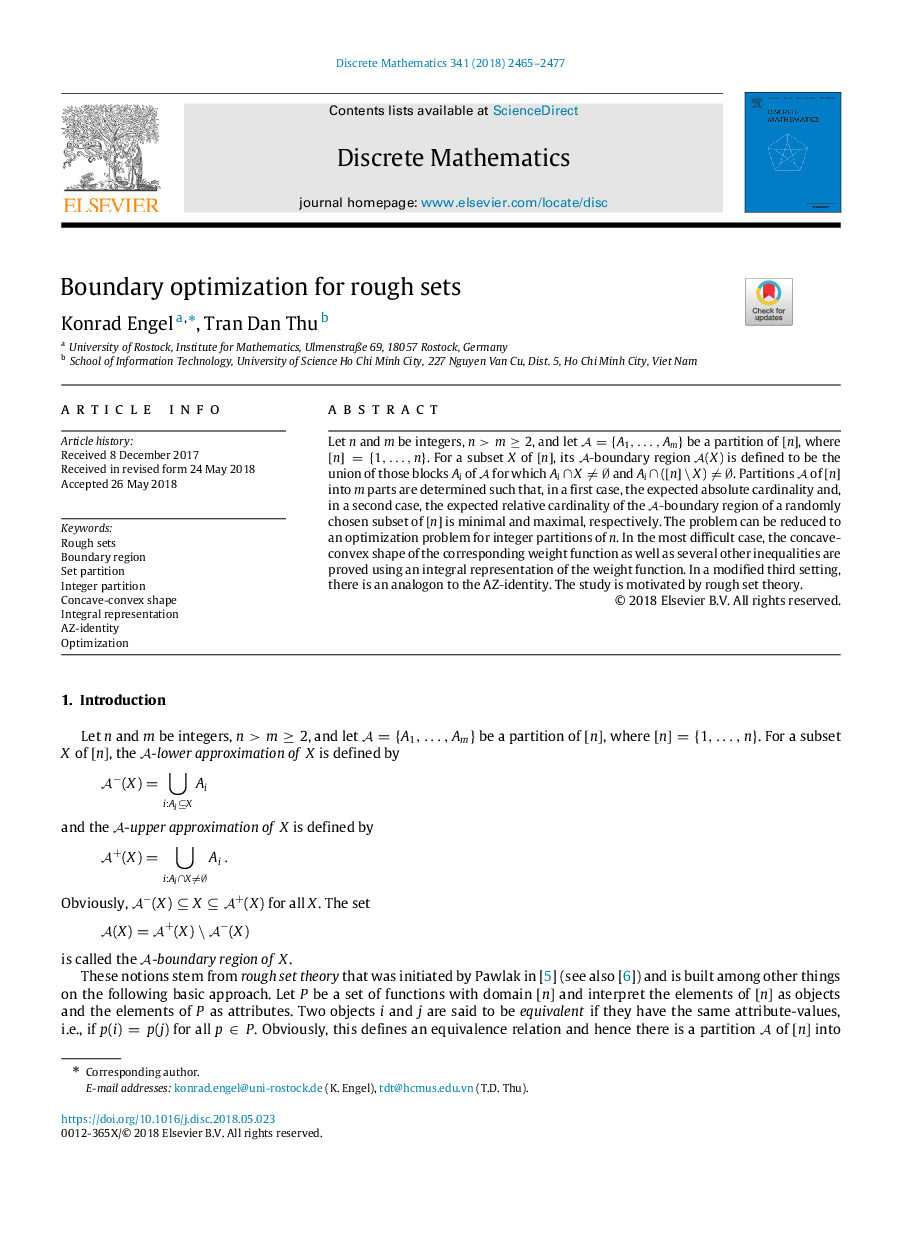| Article ID | Journal | Published Year | Pages | File Type |
|---|---|---|---|---|
| 8902873 | Discrete Mathematics | 2018 | 13 Pages |
Abstract
Let n and m be integers, n>mâ¥2, and let A={A1,â¦,Am} be a partition of [n], where [n]={1,â¦,n}. For a subset X of [n], its A-boundary region A(X) is defined to be the union of those blocks Ai of A for which Aiâ©Xâ â
and Aiâ©([n]âX)â â
. Partitions A of [n] into m parts are determined such that, in a first case, the expected absolute cardinality and, in a second case, the expected relative cardinality of the A-boundary region of a randomly chosen subset of [n] is minimal and maximal, respectively. The problem can be reduced to an optimization problem for integer partitions of n. In the most difficult case, the concave-convex shape of the corresponding weight function as well as several other inequalities are proved using an integral representation of the weight function. In a modified third setting, there is an analogon to the AZ-identity. The study is motivated by rough set theory.
Related Topics
Physical Sciences and Engineering
Mathematics
Discrete Mathematics and Combinatorics
Authors
Konrad Engel, Tran Dan Thu,
